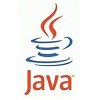Managing Data in Containers
Managing Data in Containers
So far we've been introduced to some basic Docker concepts, seen how to work with Docker images as well as learned about networking and links between containers. In this section we're going to discuss how you can manage data inside and between your Docker containers.
这一章介绍怎样在docker容器之间管理数据
We're going to look at the two primary ways you can manage data in Docker.
在容器中管理数据的2个主要方法
- Data volumes, and
- Data volume containers.
Data volumes
A data volume is a specially-designated directory within one or more containers that bypasses the Union File System to provide several useful features for persistent or shared data:
数据卷是一个专门UFS的专门文件夹,它能够提供非常多实用的特性或者共享数据
- Data volumes can be shared and reused between containers 数据卷能够在容器之间共享和重用
- Changes to a data volume are made directly 对数据卷的改变是立刻生效
- Changes to a data volume will not be included when you update an image 当你更新数据的时候。不会被包括到image中
- Volumes persist until no containers use them 卷会一直存在直到没有容器使用他们
Adding a data volume
You can add a data volume to a container using the -v flag with the docker run command. You can use the -v multiple times in a single docker run to mount multiple data volumes. Let's mount a single volume now in our web application container.
在用docker run命令的时候,使用-v标记来加入一个数据卷。在一次run中多次使用能够挂载多个数据卷,以下载入一个卷到web容器上。
$ sudo docker run -d -P --name web -v /webapp training/webapp python app.pyThis will create a new volume inside a container at /webapp.
这创建一个新的卷到容器的/webapp
Note: You can also use the
VOLUMEinstruction in aDockerfileto add one or more new volumes to any container created from that image.注意:也能够在dockerfile中使用volume来加入一个或者多个新的卷到随意容器
Mount a Host Directory as a Data Volume
In addition to creating a volume using the -v flag you can also mount a directory from your own host into a container.
使用-v标记也能够挂载一个主机的文件夹到容器中去
$ sudo docker run -d -P --name web -v /src/webapp:/opt/webapp training/webapp python app.pyThis will mount the local directory, /src/webapp, into the container as the /opt/webapp directory. This is very useful for testing, for example we can mount our source code inside the container and see our application at work as we change the source code. The directory on the host must be specified as an absolute path and if the directory doesn't exist Docker will automatically create it for you.
上面的命令载入主机的/src/webapp到容器的/opt/webapp文件夹。
这个測试的时候非常实用,比方我们能够载入我们的源代码到容器中。来查看他们是否工作良好。文件夹的路径必须是主机上的绝对路径。假设文件夹不存在docker会自己主动为你创建它。
Note: This is not available from a
Dockerfiledue to the portability and sharing purpose of it. As the host directory is, by its nature, host-dependent, a host directory specified in aDockerfileprobably wouldn't work on all hosts.注意:dockerfile 中不能用,各种操作系统的文件路径格式不一样。所以不一定适合全部的主机。
Docker defaults to a read-write volume but we can also mount a directory read-only.
docker mount默认是读写权限,但我们能够把它载入为仅仅读。
$ sudo docker run -d -P --name web -v /src/webapp:/opt/webapp:ro training/webapp python app.pyHere we've mounted the same /src/webapp directory but we've added the ro option to specify that the mount should be read-only.
加了ro之后,就挂载为仅仅读了。
Mount a Host File as a Data Volume
The -v flag can also be used to mount a single file - instead of just directories - from the host machine.
-v标记也能够从主机挂载单个文件到容器中
$ sudo docker run --rm -it -v ~/.bash_history:/.bash_history ubuntu /bin/bashThis will drop you into a bash shell in a new container, you will have your bash history from the host and when you exit the container, the host will have the history of the commands typed while in the container.
这样就能够记录在容器输入过的命令了。
Note: Many tools used to edit files including
viandsed --in-placemay result in an inode change. Since Docker v1.1.0, this will produce an error such as "sed: cannot rename ./sedKdJ9Dy: Device or resource busy". In the case where you want to edit the mounted file, it is often easiest to instead mount the parent directory.注意:非常多工具子在使用vi或者sed --in-place的时候会导致inode的改变。从docker 1.1.0起。它会报错,所以最简单的办法就直接mount父文件夹。
Creating and mounting a Data Volume Container
If you have some persistent data that you want to share between containers, or want to use from non-persistent containers, it's best to create a named Data Volume Container, and then to mount the data from it.
假设你有一些持续更新的数据须要在容器之间共享,最好创建一个命名容器卷。然后载入它。
Let's create a new named container with a volume to share.
如今就来创建一个命名容器卷并共享它
$ sudo docker run -d -v /dbdata --name dbdata training/postgres echo Data-only container for postgresYou can then use the --volumes-from flag to mount the /dbdata volume in another container.
你能够在其它容器中使用--volumes-from 来挂载/dbdata卷
$ sudo docker run -d --volumes-from dbdata --name db1 training/postgresAnd another:
$ sudo docker run -d --volumes-from dbdata --name db2 training/postgresYou can use multiple --volumes-from parameters to bring together multiple data volumes from multiple containers.
还能够使用多个--volumes-from 參数来从多个容器挂载多个数据卷
You can also extend the chain by mounting the volume that came from the dbdata container in yet another container via the db1 or db2 containers.
也能够从其它已经挂载了容器卷的容器来挂载数据卷
$ sudo docker run -d --name db3 --volumes-from db1 training/postgresIf you remove containers that mount volumes, including the initial dbdata container, or the subsequent containers db1 and db2, the volumes will not be deleted until there are no containers still referencing those volumes. This allows you to upgrade, or effectively migrate data volumes between containers.
假设你移除了挂载的容器,包含初始容器,或者后来的db1 db2,这些卷在有容器使用它的时候不会被删除。这能够让我们在容器之间升级和移动数据。
Backup, restore, or migrate data volumes
Another useful function we can perform with volumes is use them for backups, restores or migrations. We do this by using the --volumes-from flag to create a new container that mounts that volume, like so:
另外一个实用功能是使用他们来备份、恢复、移动数据卷。使用--volume标记来创建一个载入了卷的新的容器。命令例如以下:
$ sudo docker run --volumes-from dbdata -v $(pwd):/backup ubuntu tar cvf /backup/backup.tar /dbdataHere's we've launched a new container and mounted the volume from the dbdata container. We've then mounted a local host directory as /backup. Finally, we've passed a command that uses tar to backup the contents of the dbdata volume to a backup.tar file inside our /backup directory. When the command completes and the container stops we'll be left with a backup of our dbdata volume.
这里我们创建了一个容器。然后从dbdata容器来挂载一个数据卷。然后从本地主机挂载了一个/backup文件夹。
最后。使用tar命令来讲dbdata卷备份为back.tar到/backup文件夹。当命令运行完、容器停止之后,我们就备份了dbdata数据卷。
You could then to restore to the same container, or another that you've made elsewhere. Create a new container.
你能够使用这个备份来恢复这个容器。
$ sudo docker run -v /dbdata --name dbdata2 ubuntu /bin/bashThen un-tar the backup file in the new container's data volume.
然后使用untar解压这个备份文件到新容器卷中。
$ sudo docker run --volumes-from dbdata2 -v $(pwd):/backup busybox tar xvf /backup/backup.tarYou can use this techniques above to automate backup, migration and restore testing using your preferred tools.
你能够用上述技术自己主动备份、移动、恢复測试。
Next steps
Now we've learned a bit more about how to use Docker we're going to see how to combine Docker with the services available on Docker Hub including Automated Builds and private repositories.
Go to Working with Docker Hub.
本文转自mfrbuaa博客园博客,原文链接:http://www.cnblogs.com/mfrbuaa/p/5103758.html,如需转载请自行联系原作者





